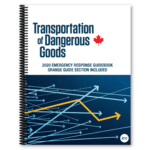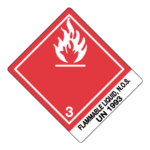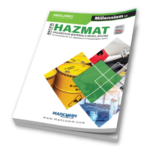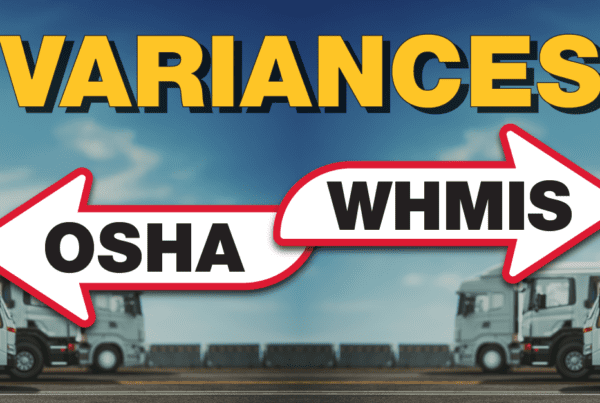This post was originally published in December 2015 and has been updated in December 2021 for accuracy.
3 Little Letters, 1 Short Phrase
The DG/HazMat world occasionally encounters confusion when there’s a need to refer to the “N.O.S.” aspect of a shipping name. The abbreviation is used in the proper shipping name of mixtures that have a potential variety of hazardous ingredients and/or don’t have a more specific, applicable name in the UN list.
The principle is that if the shipping name preceding the N.O.S. doesn’t contain sufficient details on the hazardous ingredient, then a technical name must be included in brackets following the N.O.S. as part of the proper shipping name. In some cases (i.e. US shipments) more than one technical name may need to be shown if there is more than one ingredient contributing to the hazard.
For example, in a mixture containing both ethanol and isopropanol (ethyl & isopropyl alcohols) along with other ingredients; in sufficient concentration to be classed as a flammable liquid; the proper shipping description would be “UN1993, Flammable Liquid, N.O.S. (ethanol)” internationally, and “UN1993, Flammable Liquid, N.O.S. (ethanol, isopropanol)” in the US.
Similarly, UN numbers with a subsidiary class would also have to list the ingredient, if different, resulting in the subsidiary hazard.
The US convention is allowed by the phrasing of “at least the most hazardous” or similar wording in other modal/national regulations.
Technical Names
The term “technical name” is defined in the various regulations, but the common theme is that it cannot be a marketing trade name- it must be a name such as the chemical name or a similar name recognized in scientific or technical publications. This can lead to some interpretation issues since the line between acceptable industry technical publications and scientific practice can be blurred. Typically an abbreviation will not be acceptable just because it’s used in the literature, unless a recognized body officially adopts it.
An example is the antiseptic known commonly by the abbreviation PHMB, for polyhexamethylene biguanidine. PHMB is not likely to be accepted (based on at least 2 anecdotal reports to our helpdesk) whereas the common chemical name polyhexamethylene biguanidine is acceptable (and much easier to remember than the formal scientific name which would be twice as long!).
The exception to this rule is when the DG/Hazmat list recognizes an abbreviation or code as an entry- such as the “R” codes for refrigerants e.g. “REFRIGERANT GAS R 152a” for “1,1,-DIFLUOROETHANE” (UN1030).
Another area that is subject to less stringent nomenclature is infectious substances. Depending on the specific jurisdiction, it may only be necessary to indicate a “suspected Category A infectious substance” when the exact identity of the pathogen is unknown.
Look for the Trigger
A common misconception is that a technical name is required whenever the list name ends in “N.O.S.”. This is not the case. There are about 320 or so listings that end in “N.O.S.”, however, about 38 of these are considered to have sufficient detail in the name. An example is UN 1268: “PETROLEUM DISTILLATES, N.O.S.” or “PETROLEUM PRODUCTS, N.O.S.”. Apparently, the regulators see little advantage in adding the specific product that results in it being flammable to the term “petroleum”. Similarly UN1477: “NITRATES, INORGANIC, N.O.S.” is a stand-alone proper shipping name. As long as the correct PG is given, it matters little which specific nitrate compound (e.g. potassium or sodium) is in the nitrate mixture.
How is one to know the trigger? Each set of regulations has either a symbol or “special provision” that requires the addition of technical names to the proper shipping name. In the US 49 CFR, it’s a letter “G” in column 1 of the 172.101 HazMat Table; in the Canadian TDGR it’s invoked by Special Provision 16 (SP 16) in Column 5 of Schedule 1; IATA DGR uses a “star” symbol after “n.o.s.” in the Part 4.2 DG list; while the IMDG Code uses Special Provision 274 in column 6 of Volume 2’s Part 3.2 DG list.
Caution Regarding TDGR Schedule 2 – SP 16
In common with the other jurisdictions’ regulations, Canada’s TDGR SP 16 contains a provision for not disclosing the technical name of medicinal ingredients which are controlled substances WHEN THEY ARE SUBJECT TO a domestic or international prohibition on disclosure ( Presumably to make it harder for the “bad guys” to know which shipments have the “good stuff”!). Thus, this is not an automatic omission – only those covered by a specific regulation or agreement can omit the technical name.
A general caution regarding TDGR’s usually helpful practice of listing the “Applicable UN numbers”, potentially affected by that special provision, in italics at the end of each Schedule 2 special provision:
Remember that elements (like these listings) in italics are for INFORMATION ONLY, they are not part of the regulation. Due to the positioning of the information, some users who initially refer to SP 16 interpret the list of UN numbers as being those which do not require a technical name – this is NOT correct.
Rather it is a complete listing of the UN numbers which do invoke SP 16 in Schedule 1 – exemptions are only applicable if they meet the criteria in 16(2) or 16(3)’s non-italicized text.
… A variety of pitfalls.
Stay up to date and sign up for our newsletter!
We have all the products, services and training you need to ensure your staff is properly trained and informed.
 Canadian Transportation of Dangerous Goods (TDG) Regulations |
 Hazard Class 3 – Flammable Liquid, Non-Worded, High-Gloss Label, Shipping Name-Standard Tab, UN1993 |
 US 49 CFR Publications |







 ICC USA
ICC USA ICC Canada
ICC Canada